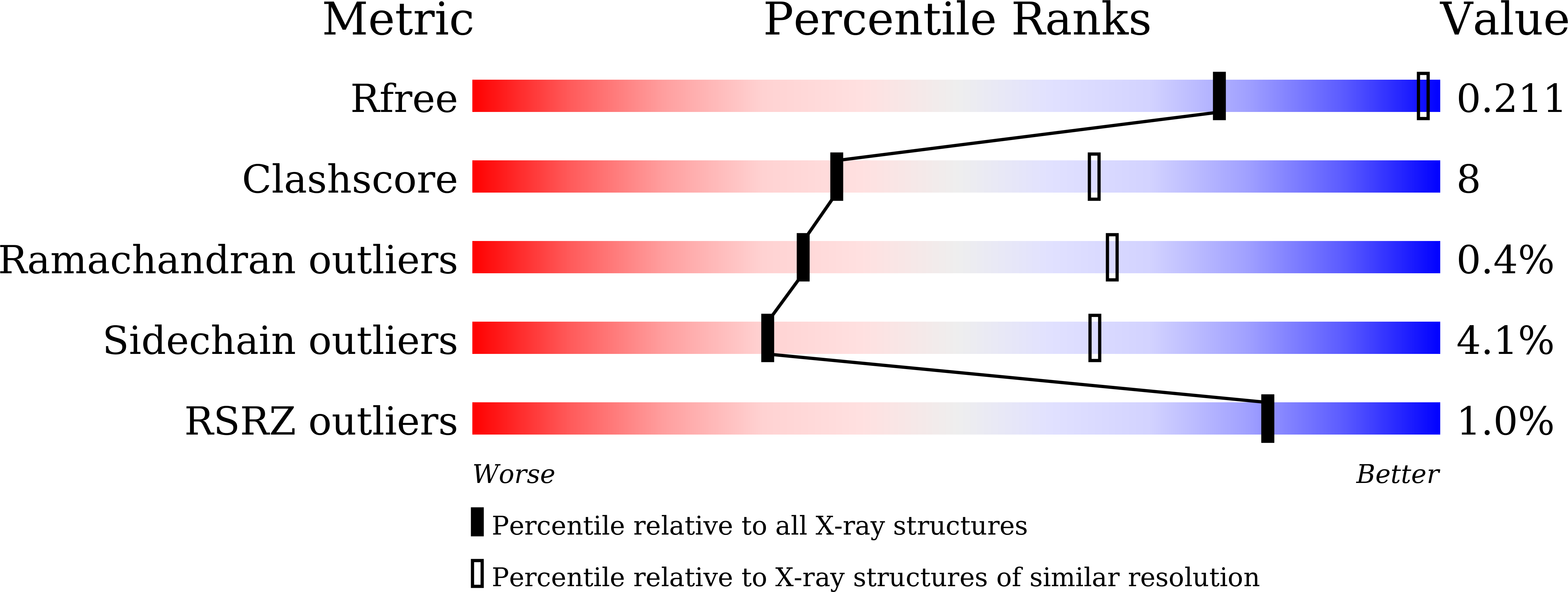Crystal structure of plant vacuolar iron transporter VIT1.
Kato, T., Kumazaki, K., Wada, M., Taniguchi, R., Nakane, T., Yamashita, K., Hirata, K., Ishitani, R., Ito, K., Nishizawa, T., Nureki, O.(2019) Nat Plants 5: 308-315
- PubMed: 30742036
- DOI: https://doi.org/10.1038/s41477-019-0367-2
- Primary Citation of Related Structures:
6IU3, 6IU4, 6IU5, 6IU6, 6IU8, 6IU9 - PubMed Abstract:
The iron ion is an essential cofactor in several vital enzymatic reactions, such as DNA replication, oxygen transport, and respiratory and photosynthetic electron transfer chains, but its excess accumulation induces oxidative stress in cells. Vacuolar iron transporter 1 (VIT1) is important for iron homeostasis in plants, by transporting cytoplasmic ferrous ions into vacuoles. Modification of the VIT1 gene leads to increased iron content in crops, which could be used for the treatment of human iron deficiency diseases. Furthermore, a VIT1 from the malaria-causing parasite Plasmodium is considered as a potential drug target for malaria. Here we report the crystal structure of VIT1 from rose gum Eucalyptus grandis, which probably functions as a H + -dependent antiporter for Fe 2+ and other transition metal ions. VIT1 adopts a novel protein fold forming a dimer of five membrane-spanning domains, with an ion-translocating pathway constituted by the conserved methionine and carboxylate residues at the dimer interface. The second transmembrane helix protrudes from the lipid membrane by about 40 Å and connects to a three-helical bundle, triangular cytoplasmic domain, which binds to the substrate metal ions and stabilizes their soluble form, thus playing an essential role in their transport. These mechanistic insights will provide useful information for the further design of genetically modified crops and the development of anti-malaria drugs.
Organizational Affiliation:
Department of Biological Science, Graduate School of Science, The University of Tokyo, Tokyo, Japan.
















